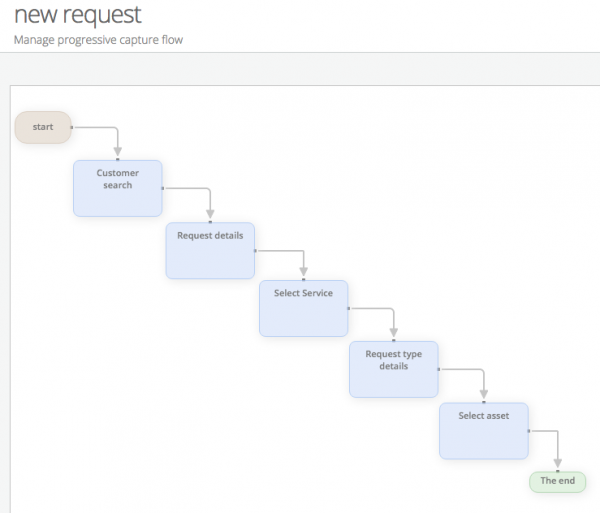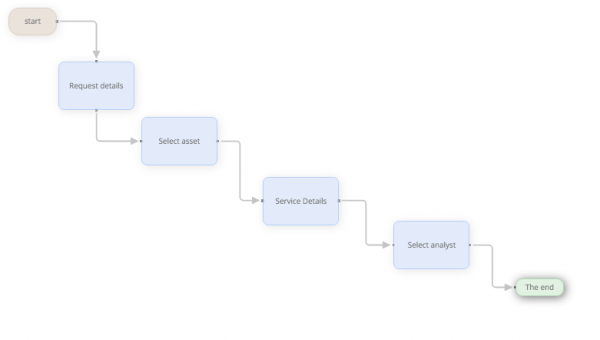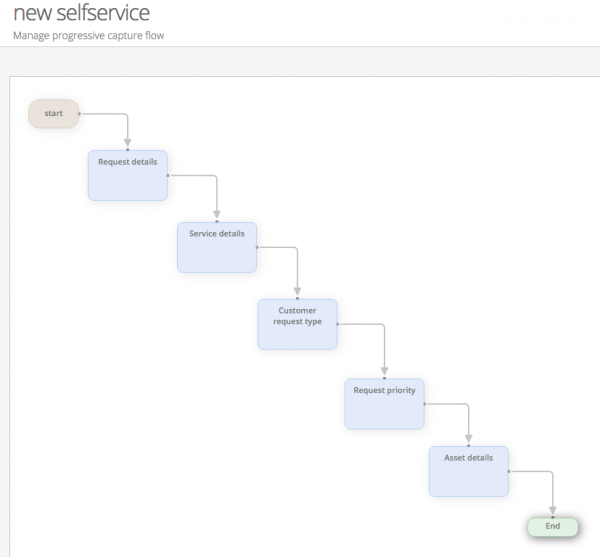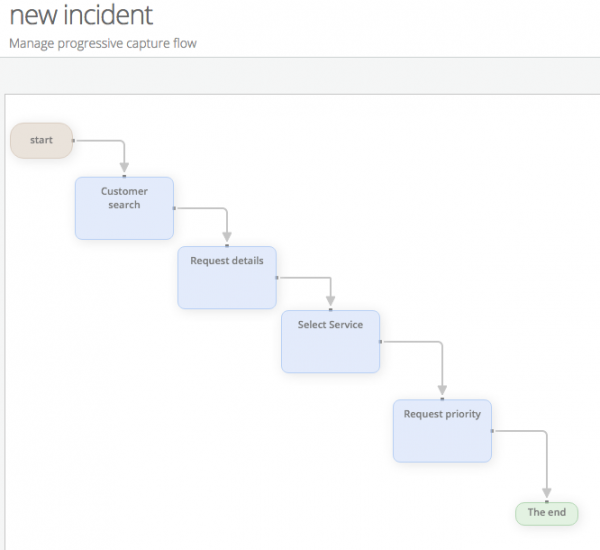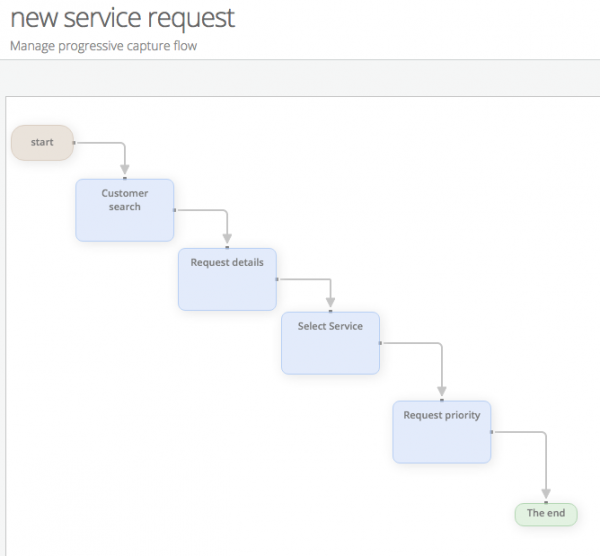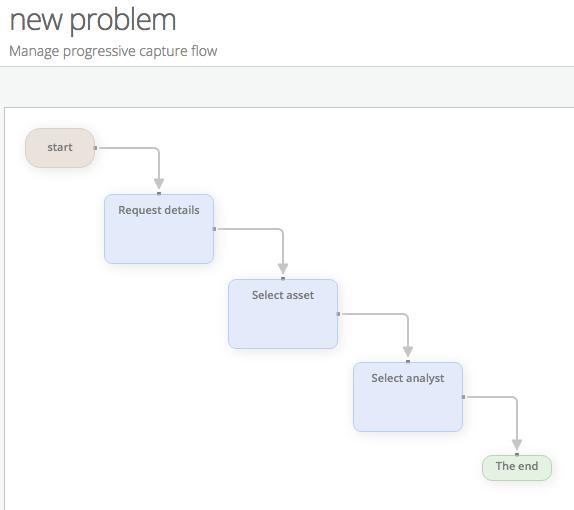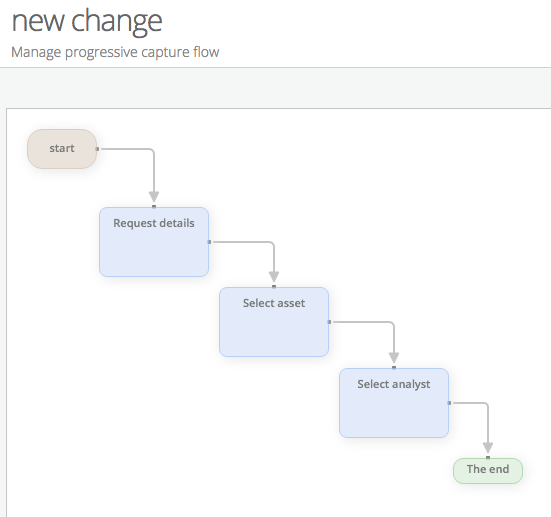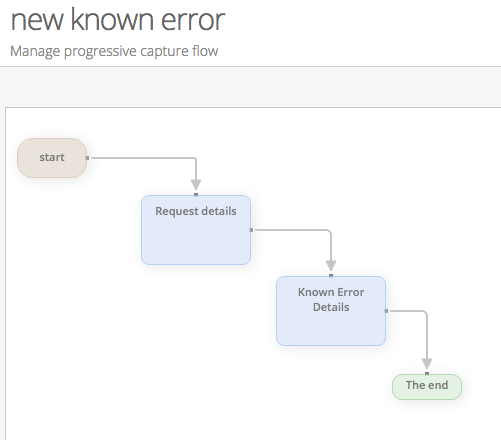Difference between revisions of "Progressive Capture Workflow"
| Line 203: | Line 203: | ||
* Filter on Contacts or Co-workers | * Filter on Contacts or Co-workers | ||
* The Customers active Requests are displayed when a customer is resolved. | * The Customers active Requests are displayed when a customer is resolved. | ||
| − | :* The list of the | + | :* The list of the customer's Requests can be filtered to only show those which the logging agent supports via the linked service: '''app.itsm.progressiveCapture.customerDetails.showOnlySupportedRequests'''. When disabled, an agent will have visibility to unsupported customer Requests, this must be avoided for customers with multiple service desks (e.g. IT and HR). |
:* An option to add a new Contact can be displayed on this form if the following system setting is enabled: '''app.itsm.progressiveCapture.customerSearch.allowAddContact''' | :* An option to add a new Contact can be displayed on this form if the following system setting is enabled: '''app.itsm.progressiveCapture.customerSearch.allowAddContact''' | ||
* Advanced filtering | * Advanced filtering | ||
Revision as of 10:36, 3 November 2020
Home > Administration > Service Manager > Progressive Capture
IntroductionProgressive Capture allows you to configure how and what information is collected or captured when a request is being raised. This includes default capture forms that are specific to Service Manager and the ability to create custom question forms. This page describes the available Service Manager forms which can be used in the Progressive Capture Designer, the provided default Progressive Capture Scripts, and some of the available advanced settings. |
Related Articles |
Progressive Capture Forms
Service Manager provides a number of default forms that are available to use when building the Progressive Capture scripts for raising requests. These forms can be made available to a progressive capture script by adding a Form node to your progressive capture and selecting the form name from within the properties of the node.
- Add Attachments
- The 'Add Attachments' form allows you to include files when raising a request. Multiple attachments can be added and individual descriptions can be applied to each.
- Add attachments such as screen shots while raising a request
- Browse local file system or drag and drop file
- Includes description of attachment for easy reference
- Stores attachments in the Attachments section of a request for easy access
- Option to specify a custom title on the form
- Option to specify a custom information message to describe to the user the type of attachment that you are requesting. This option can contain wiki formatting for improved presentation.
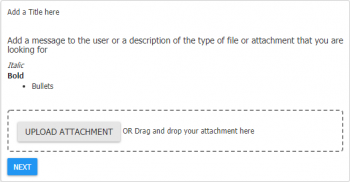
 Attachments are regulated by the following system settings that restrict size and type: communications.maxfileUploadSize, security.fileUploadRestriction.webdav.enable, security.fileUploadRestriction.entity.fileAttachments.types
Attachments are regulated by the following system settings that restrict size and type: communications.maxfileUploadSize, security.fileUploadRestriction.webdav.enable, security.fileUploadRestriction.entity.fileAttachments.types
- Analyst Request Type
- The 'Analyst Request Type' form allows the support staff to choose the type of request that will be created. This form is most commonly seen in the 'New Request' progressive capture flow as the support person may not know which type of request needs to be raised when they first start capturing information.
- Only the requests types that the analyst who is raising the request has rights to will be displayed
- Visibility: Analysts only
- Branch Options: Request Type
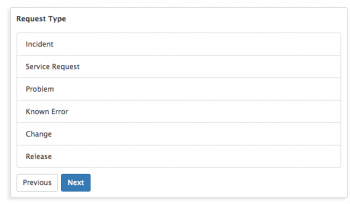
- Assignment
- The 'Assignment' provides options for assigning the request to a team and an owner. You can choose to assign the request to just a team or to a team and a specified analyst.
- Function: Search for Team and Owner to assign request
- Input: When preceded by the Service Details Form, only teams that support that service will be displayed
- Visibility: Analysts only
- Output: Branch nodes that follow this will be able to use Team Name, Team ID, Anaylst Name, Analyst ID as criteria for branching
- Options
- Analyst is Mandatory
- When set to Yes the owner or analyst field becomes mandatory and must be selected to continue
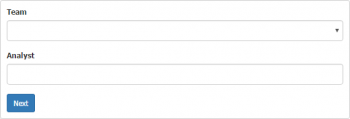
- Asset Details
- The 'Asset Details' form allows an analyst or customer to associate assets to a request. By default, all assets that are associated to the customer are shown however it is also possible to associate assts which are shared with the customer, or perform general searches on assets that reside at the customer site, or more widely in the system. It's possible to associate multiple assets to each request:
- View Asserts owned and user directly by a customer
- View Assets shared with a customer (directly or via their membership to groups or organizations the asset has been shared with)
- Search assets by site or more widely
- Input: Following a Search Co-worker / Contact or Customer form the assets belonging to or shared with the customer will be displayed
- Visibility: Analysts and Customers
- Branch Options: None
- If this node is preceded by the Sites node, the Sites Tab will be automatically filtered to only display assets located at the selected site.
Options
- Asset Title
- Displays a title at the top of the Asset form
- Info Message
- Add a longer descriptive message explaining to the user how to use the form
- Hide Customer's Assets
- Select Yes to always have this tab hidden
- Hide Shared Assets
- Select Yes to always have this tab hidden
- Hide Customer's Site Assets
- Select Yes to always have this tab hidden
- Hide Company Assets
- Select Yes to always have this tab hidden
- Hide All Assets
- Select Yes to always have this tab hidden
- Hide Service Assets
- Select Yes to always have this tab hidden
- Select Asset Class
- Select Yes to always have this tab hidden
- Select Asset Type
- On the Asset Search, set the Asset Type to be searched
- Select Asset Status
- On the Asset Search, set the Asset Status to be searched
- Asset Search Term
- On the Asset Search, set a default Search Term to be searched
- Select Asset Search Type
- On the Asset Search, set if the results return assets with an exact match, contains, or begins with the specified Search Term
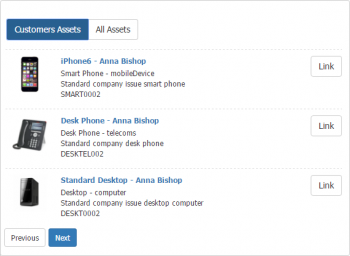
- Change Type
- The 'Change Type' form allows an analyst to select the type of change request that will be raised. This form is usually only seen on the new Change progressive capture flow:
- Select Change Type
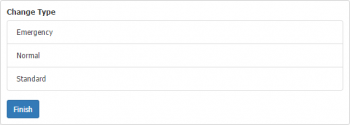
- Connections
- The Connections form allows the support person to select a connected customer at the time of raising the request. This form is only used by and visible to support staff when raising the request in Service Manager when using the full client.
- Customer Request Type
- The 'Customer Request Type' form allows the customer to choose what type of request they are raising. This PCF is most commonly seen on the 'New Self Service' progressive capture flow which is used by both the Hornbill Service and Customer portals. It is slightly different to the 'Analyst Request Type' form in that it only offers the ability to select a request type of Incident (Something is broken) or Service Request (I need something):
- Select option for Something is Broken
- Select option for I need something

- Customer Search
- The 'Customer Search' form allows an analyst to select a customer for the request. This search returns both Contacts and Co-workers. This form is useful when the a support team is supporting both external and internal customers.
- Search both Contacts and Co-workers
- Filter on Contacts or Co-workers
- The Customers active Requests are displayed when a customer is resolved.
- The list of the customer's Requests can be filtered to only show those which the logging agent supports via the linked service: app.itsm.progressiveCapture.customerDetails.showOnlySupportedRequests. When disabled, an agent will have visibility to unsupported customer Requests, this must be avoided for customers with multiple service desks (e.g. IT and HR).
- An option to add a new Contact can be displayed on this form if the following system setting is enabled: app.itsm.progressiveCapture.customerSearch.allowAddContact
- Advanced filtering
- By appending one or more of the following keys you can narrow the search to specific areas:
- org: - this filters by Organisation
- site: - this filters by Site
- type: - this filters by Co-Worker Type
- tel: - this filters by the primary telephone number
- phone: - this is a synonym for tel:
Example:
Joe org: ACME
would return all customers named Joe from the ACME Organisation
- Contact Search
- The 'Contact Search' form provides a search option for adding a contact as the customer for the request. The search results only displays contact records and is recommended to use when only providing external support.
- Search all contacts
- Configure fields to be displayed on the right hand side
- The Contacts active Requests are displayed when a contact is resolved.
- The list of the Contact's Requests can be filtered to only show those which are logged against services, which the logging analysts team's support: app.itsm.progressiveCapture.customerDetails.showOnlySupportedRequests
- An option to add a new Contact can be displayed on this form if the following system setting is enabled: app.itsm.progressiveCapture.contactSearch.allowAddContact

- Co-worker Search
- The 'Co-worker Search' form provides a search option for adding a Co-worker as the customer for the request. This search results only displays co-worker records and is recommended to use when only providing internal support.
- Search all Co-workers
- Configurable field to be displayed on the right hand side
- The Co-workers active Requests are displayed when a co-worker is resolved.
- The list of the Co-workers Requests can be filtered to only show those which are logged against services, which the logging analysts team's support: app.itsm.progressiveCapture.customerDetails.showOnlySupportedRequests

- Known Error Details
- The 'Known Error Details' form allows an analyst to specify root cause and workaround details for a known error. This form is usually only seen on the new Known Error progressive capture flow:
- Provide root cause and workaround details
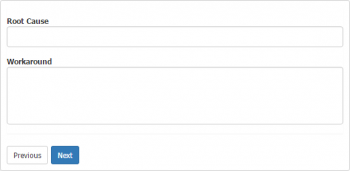
- Organisation Details
- The 'Organisation Details' form allows an analyst to see additional information about the customer's organisation that is defined by a Hornbill administrator. There is no data captured in this PCF - it is purely informational only.
- Display only
- Will display the organisation of a previously selected contact
- Recommended use after the Contact Search
- Configurable organization fields for the right hand side

- Release Type
- The 'Release Type' form allows an analyst to select the type of release request that will be raised. This form is usually only seen on the new Release progressive capture flow:
- Select Release Type
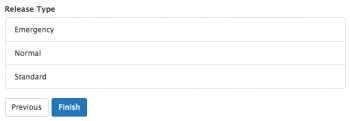
- Request Category
- The 'Request Category' form allows an analyst to specify a category when logging a request.
- Request Category selector
- When preceded by the Service Details form the category will display the configured root category for the selected service
- Use the Mandatory option to enforce a user to pick a category before existing the form
- If you want to ensure the user chooses a category from the lowest level of the available category tree structure, ensure the following system setting is enabled guest.servicemanager.request.category.request.enforceLastItem

- Request Details
- The 'Request Details' form allows an analyst to enter both a summary and a description for the request.
- Add summary to the request
- Add a detailed description to the request
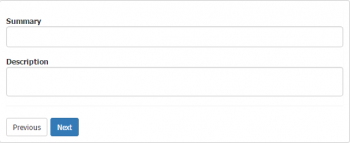
- Request Priority
- The 'Request Priority' form allows the priority of the request to be set.
- Select the Priority for the request

- Select Site
- The 'Select Site' form allows an analyst or customer to specify a site when logging a request:
- The All Sites filter allows you to search for a site by name
- If preceded by the customer / co-worker form, this will show the option to pick the site associated to the customer
- If a customer belongs to a Company internal organisational group, and that Company also has associated sites, then a Company site filter will appear and you can search for sites which are associated to the customers company.
- If preceded by the asset form, will show the option to pick the site associated to any of the selected assets
- Branch Options: The name of the selected site can be used in a branch node
Options
- Limit Portal Search to Name
- If set to No the post code and site ID are included in the search. If set to Yes then only the name of the site name is searched on.
- Info Message
- Add a longer descriptive message explaining to the user how to use the form
- Hide Customer's Site
- Select Yes to always have this tab hidden
- Hide Company Sites
- Select Yes to always have this tab hidden
- Hide Asset Sites
- Select Yes to always have this tab hidden
- Hide All Sites
- Select Yes to always have this tab hidden
- Hide All Sites in Portals (if all sites option is not hidden)
- Select Yes to always have the sites tab hidden when viewing on the portals
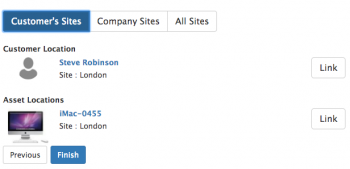
- Service Details
- The 'Service Details' form allows an analyst to specify a service when logging a request:
- Displays Request Catalog Items under each Service
- If preceded by the Customer, Co-worker, or Contact Search the Service Details will only show the subscribed services for the selected person
- If preceded by the Requets Type form, only the Request Catalog Items that match that type will be displayed
- Branch Options: The name of the selected service can be used in a branch node
- Filter option by Service Category
- Setting: servicemanager.progressiveCapture.servicedetails.enableSupportVisibility - restricts the view so that the list of services also only includes the services supported by the analyst
- Setting: servicemanager.progressiveCapture.servicedetails.catalogRequired - enforces the selection of a request catalog item if one exists under a Service
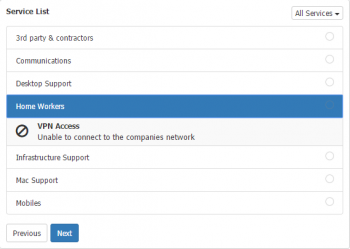
Default Progressive Capture Scripts
By default, Hornbill provide the following progressive capture flows. These can be edited, copied or deleted accordingly:
Settings
Service Manager settings are available to configure the default Progressive Captures that are used when raising requests.
- app.itsm.progressiveCapture.newRequest
- The named Progressive capture on this setting will be used when the Raise New option is used or when an email is used to raise a new request
- app.itsm.progressiveCapture.newIncident
- The named Progressive capture on this setting will be used when raising an Incident
- app.itsm.progressiveCapture.newServiceRequest
- The named progressive capture on this setting will be used
- app.itsm.progressiveCapture.newProblem
- Default when raising problems
- app.itsm.progressiveCapture.newKnownError
- Default when raising Known Errors
- app.itsm.progressiveCapture.newChange
- Default when raising a change
- app.itsm.progressiveCapture.newRelease
- Default when raising a release
- app.itsm.progressiveCapture.newRequestFromEmail
- The name of the progressive capture script to use when raising a request from the Raise New Request plug-in located within the email view. The default used when this is not set is the New Request progressive capture.
Global Variables
Global variables are available throughout the Progressive Capture workflow. These will allow branching to be used based on these values
- Portal Type
- This global variable lets you determine the branching based on one of two entry points. This could either be from one of the customer portals (Portals) or the main Hornbill client (Service Desk)
- Source
- This global variable lets you determine the branching of a Progressive Capture script based on the provided sources. The options for source include Analyst, Chat, Email, Post, Request, Self Service

